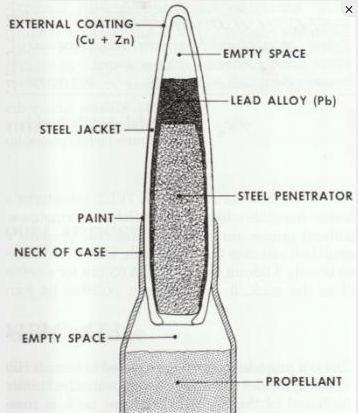Federal Judge Upholds Russian 7N6 Ammo Ban
On Wednesday, a federal judge in Seattle ruled against P.W. Arms in their challenge of the ATF’s 2014 ban on imports of Russia’s 7N6 5.45x39mm ammunition. As you may recall, the 7N6 ban centered around the fact that the bullet’s core features a large steel insert to enhance penetration. According to the ATF’s interpretation of the 1968 Gun Control Act, the presence of steel in the core and the fact that Fabryka Broni submitted a 5.45 pistol for approval makes 7N6 an armor piercing handgun round – a ridiculous argument indeed.
It’s important to note that when the ATF initially moved to ban the round, there were no commercially-manufactured 5.45mm pistols on the market. The FB pistol referenced in the ATF’s advisory was never actually sold in the United States. Based on this alone, their reasoning was flawed, but this wasn’t the only problem.
As P.W. Arms apparently stated in court, the ATF misinterpreted the definition of armor piercing rounds. 8 U.S.C. 921(a)(17)(B) reads as follows:
(B)The term “armor piercing ammunition” means—
(i) a projectile or projectile core which may be used in a handgun and which is constructed entirely (excluding the presence of traces of other substances) from one or a combination of tungsten alloys, steel, iron, brass, bronze, beryllium copper, or depleted uranium; or
(ii) a full jacketed projectile larger than .22 caliber designed and intended for use in a handgun and whose jacket has a weight of more than 25 percent of the total weight of the projectile.
7N6 clearly does not meet (ii) as no reasonable person could conclude that a round specifically designed for the AK-74 rifle was “designed and intended” for a handgun. However, the ATF states that (i) does apply to the cartridge. According to their determination, and now the federal judge’s ruling, the bullet’s core is constructed entirely of steel. This simply isn’t true.
I swiped the illustration shown above from firearmstalk.com. Note the substantial amount of lead in 7N6’s core. That’s certainly more than what could sensibly be considered “trace” amounts of the metal. Every technical definition treats anything inside a bullet’s jacket as part of the core. 7N6 quite clearly has a lead and steel core, which disqualifies it from classification as armor piercing under definition (i).
With all of this in mind, it is difficult to see how an unbiased judge could come to agree with the ATF. My guess is that P.W. Arms will continue to fight this in the court system, but Wednesday’s ruling should be a clear sign that despite the company’s strong case, victory is anything but certain.
An information security professional by day and gun blogger by night, Nathan started his firearms journey at 16 years old as a collector of C&R rifles. These days, you’re likely to find him shooting something a bit more modern – and usually equipped with a suppressor – but his passion for firearms with military heritage has never waned. Over the last five years, Nathan has written about a variety of firearms topics, including Second Amendment politics and gun and gear reviews. When he isn’t shooting or writing, Nathan nerds out over computers, 3D printing, and Star Wars.

